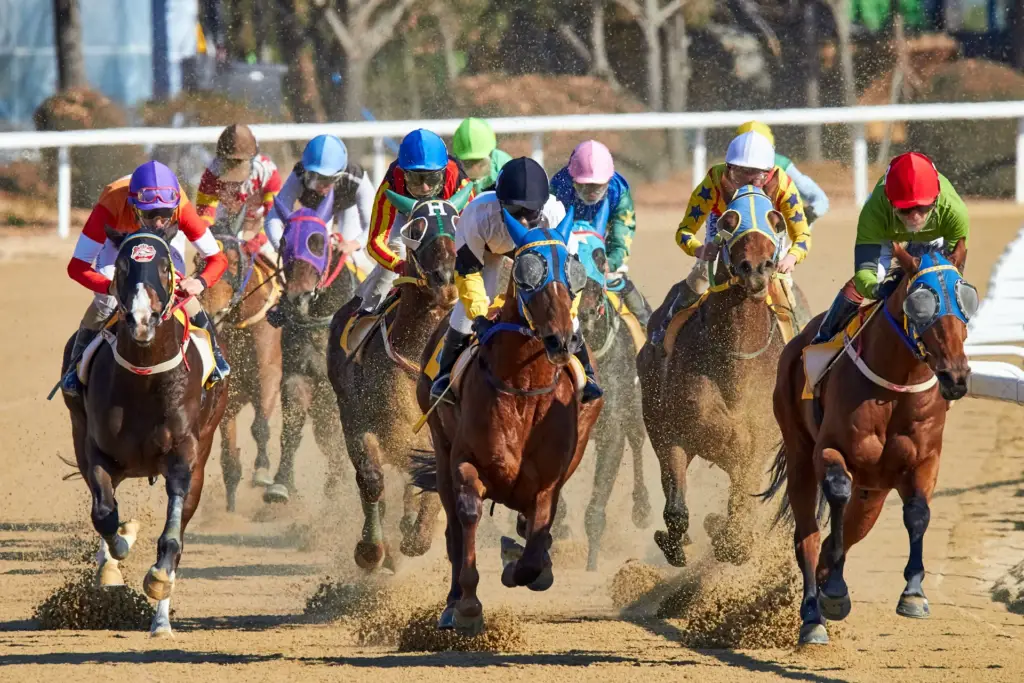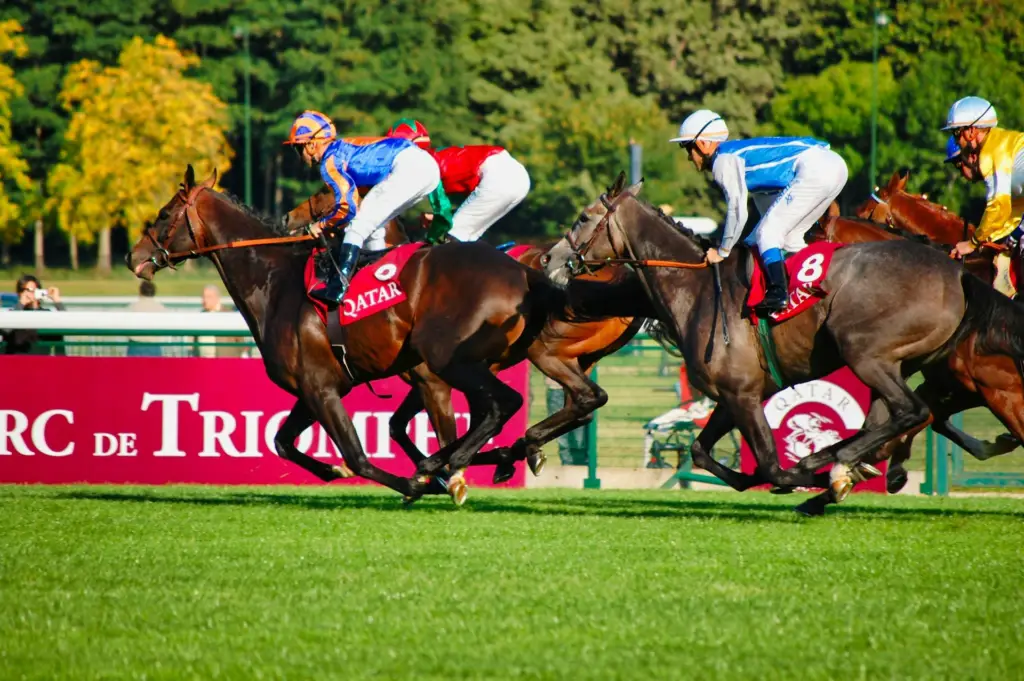
Horse racing is one of the oldest sports in the world and its popularity continues to grow. The spectacle and atmosphere of a day at the races are unique, while nothing beats the adrenalin rush of cheering home a winner.
The start of the modern era of racing is widely recognised to have begun in England with the inauguration of the St. Leger in 1776, the Oaks in 1779, and the Derby in 1780. The success of these English classic races saw the Two Thousand Guineas in 1809 and the One Thousand Guineas in 1814 follow. Now there are lots of celebrated horse races all around the world that attract millions of fans.
Biggest Horse Races in the World
- Kentucky Derby
- Breeders’ Cup Classic
- Gold Cup at Ascot
- Dubai World Cup
- Preakness Stakes
- Belmont Stakes
- Prix de l’Arc de Triomphe
- Melbourne Cup
- Cheltenham Gold Cup
- The Grand National
To a newcomer, the world of horse racing can seem a little confusing at first. From understanding odds and weights, to colors, trainers, distance, and more. That’s why we’ve put together a guide to help you understand what it all means including how to bet on horse racing.
Understand the Terminology
Blinkers, handicap, silks, on the nose, parlay, chalk. Horse racing jargon can sound like a foreign language to a newcomer but you’ll soon get the hang of it. Be sure to check out the different terms and phrases and get familiar with the terminology before you go to a race or place a bet.
The Racecard
Horseracing is a sport packed with statistics and information. While this can feel overwhelming to people new to the sport, it’s also one of the many reasons fans find it so exciting.
Every race meet has a racecard that details the runners and riders for each race. First and foremost, this will reveal the times of each race, the list of the runners and riders, the silks worn by the jockeys and their numbers.
Look deeper into the information, and once you know what you’re looking for, it’s possible to pick out key pieces of information that could help you pick a potential winner.
Form
Check the racecard for a horse’s recent performance or ‘form’. This information can be found in a series of numbers and letters next to the horse’s name, and is a quick way to see what position a horse has come in its previous races. If your horse has not been on ‘form’ or winning any races, it might be better to look elsewhere.
Trainer
One of the most important factors in a horse’s performance is the person who reared and trained it. They very best trainers will attract the best horses to their stable and often have impressive winning records compared to others.
It’s also worth bearing in mind that trainers often run several horses in one race and that some are better suited to certain tracks or races.
Jockey
The best horses will not only attract the trainers, but also the best jockeys. A great trainer, jockey and horse can often be an unbeatable package. However, as with trainers, not all jockeys are suited to all courses, so it’s well worth checking out their record around the track you’re looking at.
Surface
There are three types of surfaces used for horse racing worldwide. They are turf, dirt and synthetic or artificial tracks. Turf tracks are considered traditional and are more common, whereas dirt is the primary surface in the US.
The weather has a huge effect on a turf track and horses vary in their performance depending on how wet or dry the course is.

Bet Types
Now you know what to look for in order to pick a winner, it’s time to place a bet. Here’s a round up of the most common bet types available in horse racing.
Win
This simplest bet to understand but also one of the hardest to do. Pick a horse you think is going to win and place your bet. If it crosses the line first then you’re a winner.
Each Way
This is a bet placed on a horse to either win or be placed. The place terms vary according to each race, but normally your horse would need to finish in the top three or four places.
Straight Forecast
This involves picking the first two horses to cross the finishing line – in the correct order.
Tricast
If you thought Straight Forecast was hard, then a Tricast requires picking the first three across the line in the correct order.
Have Fun
Picking a winner is hard to do, but the more research you do, the better your chances are of winning. But whether you win or lose, the key to enjoying horse racing is to stick to your budget, relax, and have some fun.










